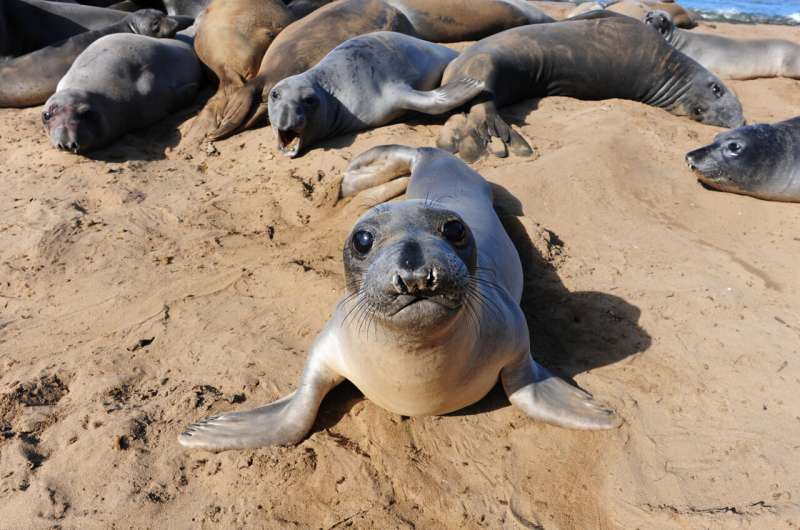This article has been reviewed according to Science X's editorial process and policies. Editors have highlighted the following attributes while ensuring the content's credibility:
fact-checked
trusted source
proofread
Scientists discover the real-life impacts of northern elephant seal bottleneck

New research of northern elephant seals has revealed their reproductive and foraging success has been affected by a population bottleneck which nearly caused their extinction and could make them vulnerable as the environment changes in the future.
The northern elephant seal is an iconic species living along the very accessible Pacific coastline of Mexico and North America, hauling out on beaches to breed. For much of the 19th century, they were hunted for the oil derived from their blubber. They were thought extinct after the last few that could be found were taken in 1892.
Fortunately, around 20 had survived, and they made a remarkable comeback. Now less than 150 years later, there are over 200,000 of them in an apparently healthy and stable population.
Research, led by Durham University, in collaboration with researchers in the U.S. and China, revealed that despite an apparent full recovery, the bottleneck has compromised key genes associated with reproductive success and the seals' ability to forage efficiently. The study "Genomics of post-bottleneck recovery in the northern elephant seal" has been published in the journal Nature Ecology & Evolution.
The research team analyzed nearly 270 northern elephant seals exploring their entire genetic make-up and comparing pre- and post-bottleneck seals. Their results showed an extreme direct loss of diversity due to the bottleneck event and found the overall fitness in the modern population had been impacted.
Researchers found three categories of post-bottleneck impact, including a reduction in diversity, lower female and male reproductive success, as well as lower dive performance. Together, leaving the species vulnerable to environmental stresses that could occur in the future.
A critical aspect of elephant seal life history is their extensive deep diving foraging excursions when they accumulate fat stores to facilitate fasting during the breeding season. The research showed that individuals affected by the bottleneck at specific relevant genes were less proficient divers.
Males fight to control large harems of females for mating, but the study found that some males had acquired genetic defects that impaired their reproductive potential. For females, it was an overall loss of diversity that reduced their lifetime reproductive success.
Professor Rus Hoelzel, in the Department of Biosciences—Durham University, said, "In this study we looked at genetic variation across entire genomes from pre- and post-bottleneck northern elephant seals. We found that the fitness of post-bottleneck seals has been significantly impacted from increased inbreeding, the retention of genes that have lost their function, and the distortion of the frequency of genetic types across the population.
"So far, the species has recovered remarkably well, but these findings call into question how susceptible it might be to environmental stresses in the future."
More information: Hoelzel, A.R. et al, Genomics of post-bottleneck recovery in the northern elephant seal, Nature Ecology & Evolution (2024). DOI: 10.1038/s41559-024-02337-4
Provided by Durham University




















